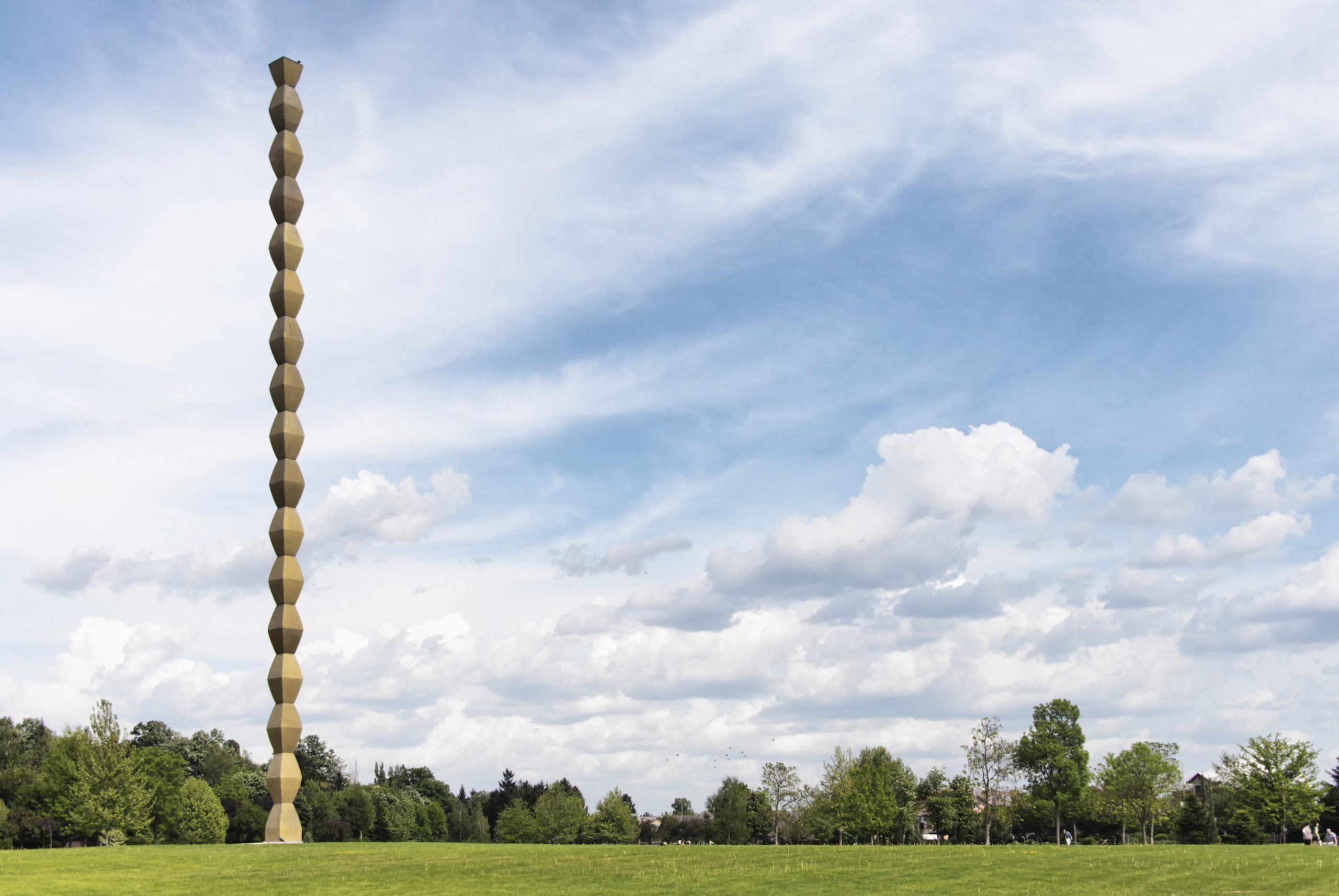
As Constantin Brancusi neared the end of his life in the 1950s, he proposed bequeathing his estate to Romania. When the Communist regime refused, Brancusi pledged it to France instead, thereby depriving Romania from adequately memorializing its greatest modern artist.
Fortunately, Brancusi had already erected a monument to his legacy in his home country in the form of an open-air collection in the southwestern town of Targu Jiu—a series UNESCO has now named a World Heritage site.
In 1935, Brancusi was commissioned to build a monument to the soldiers who had died defending the town from the Central Powers in the First World War. Collectively known as Sculptural Ensemble of Constantin Brancusi, it’s comprised of numerous sculptural works including Gate of the Kiss, Table of Silence, and Endless Column. In the 1950s, the Romanian government proposed demolishing the column and repurposing the scrap metal, but never completed the plan.
Constantin Brancusi, Table of Silence (1935–38). Photo courtesy World Monuments Fund.
The first two are small, quiet works of marble and stone. Endless Column, by contrast, towers 98-feet-high above central Targu Jiu. It’s comprised of 15 alloy rhomboids woven together like a geometric spine. Its peak is incomplete, expressing both infinity and the boundless sacrifice made by Romanian soldiers. Brancusi refused to receive payment for the commission.
“The granted recognition forces us to protect the monumental ensemble, to keep it intact for future generations and for humanity’s cultural memory,” said Raluca Turcan, Romania’s culture minister, acknowledging that the monument had deteriorated considerably in the past.
Constantin Brancusi, The Gate of the Kiss (1935–38). Photo: Jean-Michel Coureau / Gamma-Rapho via Getty Images.
The admission was declared during the 46th session of the World Heritage Committee in Delhi. UNESCO also added the Appian Way, Rome’s earliest and most important road. It is Italy’s 60th UNESCO World Heritage site.
First built in the 4th century B.C.E., it expanded rapidly, eventually linking the capital with faraway Taranto and Brindisi. It’s durable stone surface and a sophisticated drainage system allowed for the relatively easy circulation of soldiers and trade goods across the peninsula.
The Appian Way in Rome the strategic highway for the Roman Empire. Photo: Filippo Montefiore/Getty Images.
“This property, composed of 22 component parts, is a fully developed ensemble of engineering works,” UNESCO said in a statement. “[It] illustrates the advanced technical skill of Roman engineers in the construction of roads, civil engineering projects.”
In total, 19 cultural sites were chosen in UNESCO’s latest list of protected sites. They include the archaeological remains of Hegmataneh, a 7th century B.C.E. town in northwestern Iran; a 16th century earthen royal court in Tiébélé Burkina Faso; and two archaeological sites in the highland area of Ethopia that have yielded Homo erectus, Homo heidelbergensis and archaic Homo sapiens fossils.